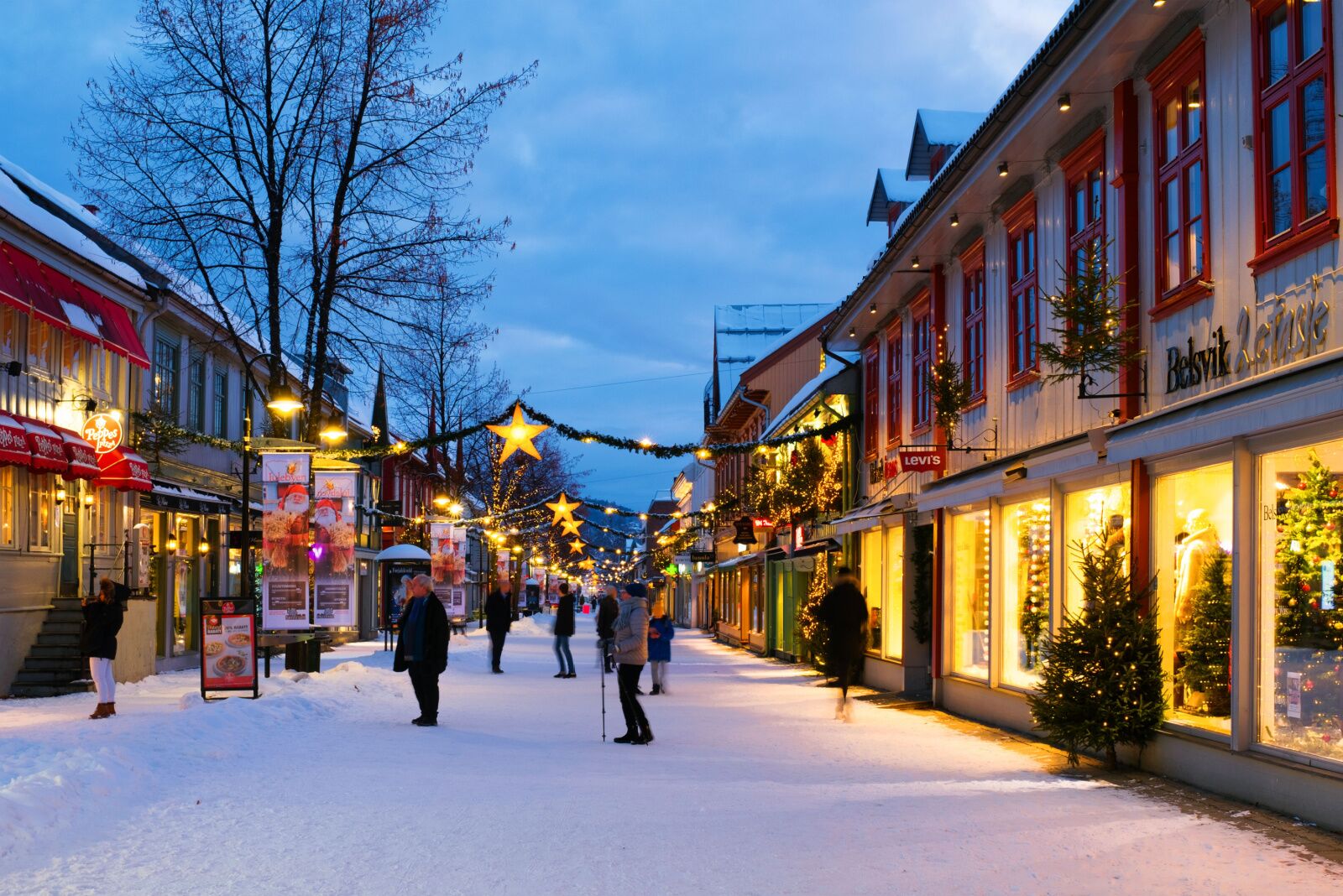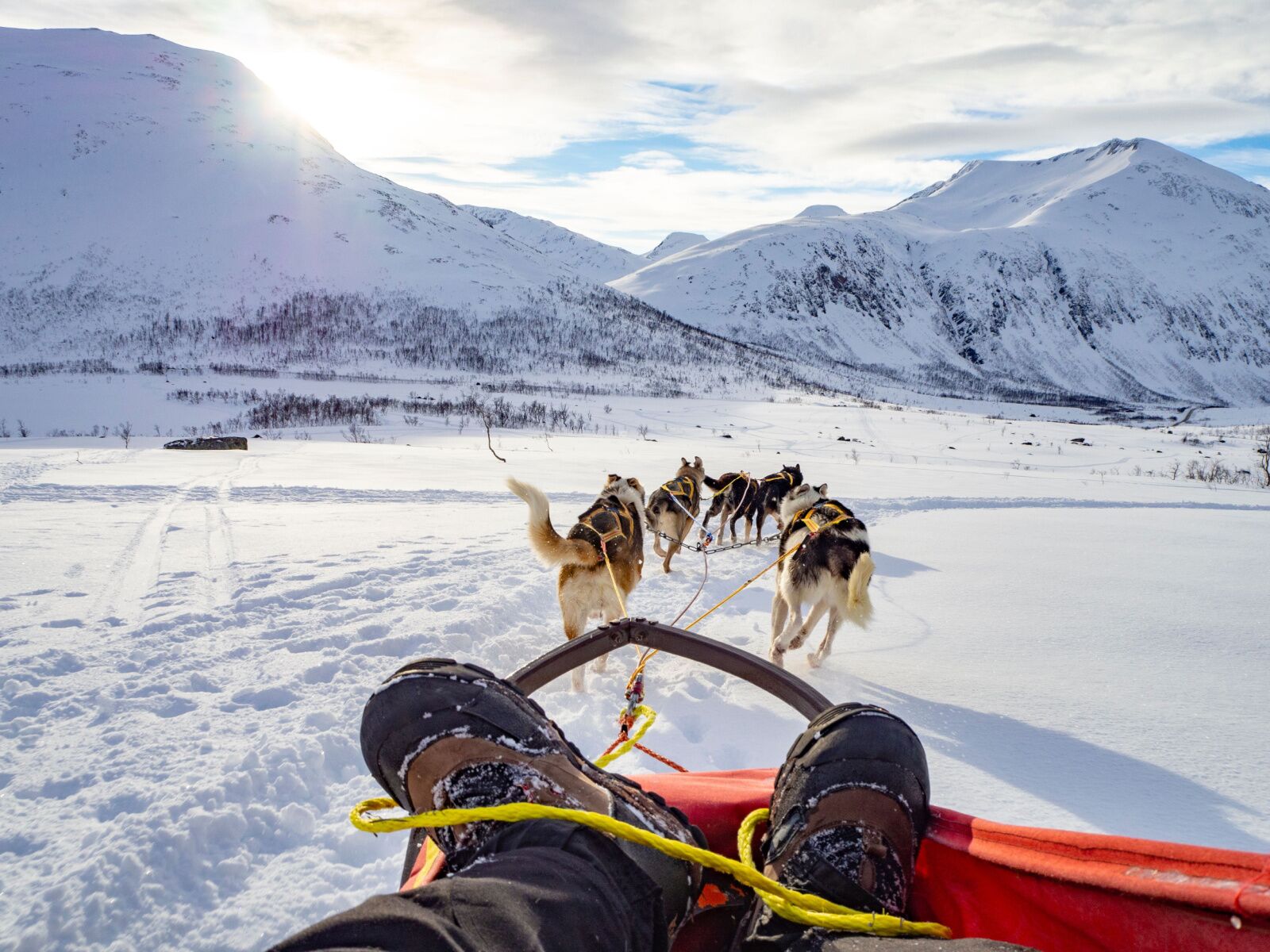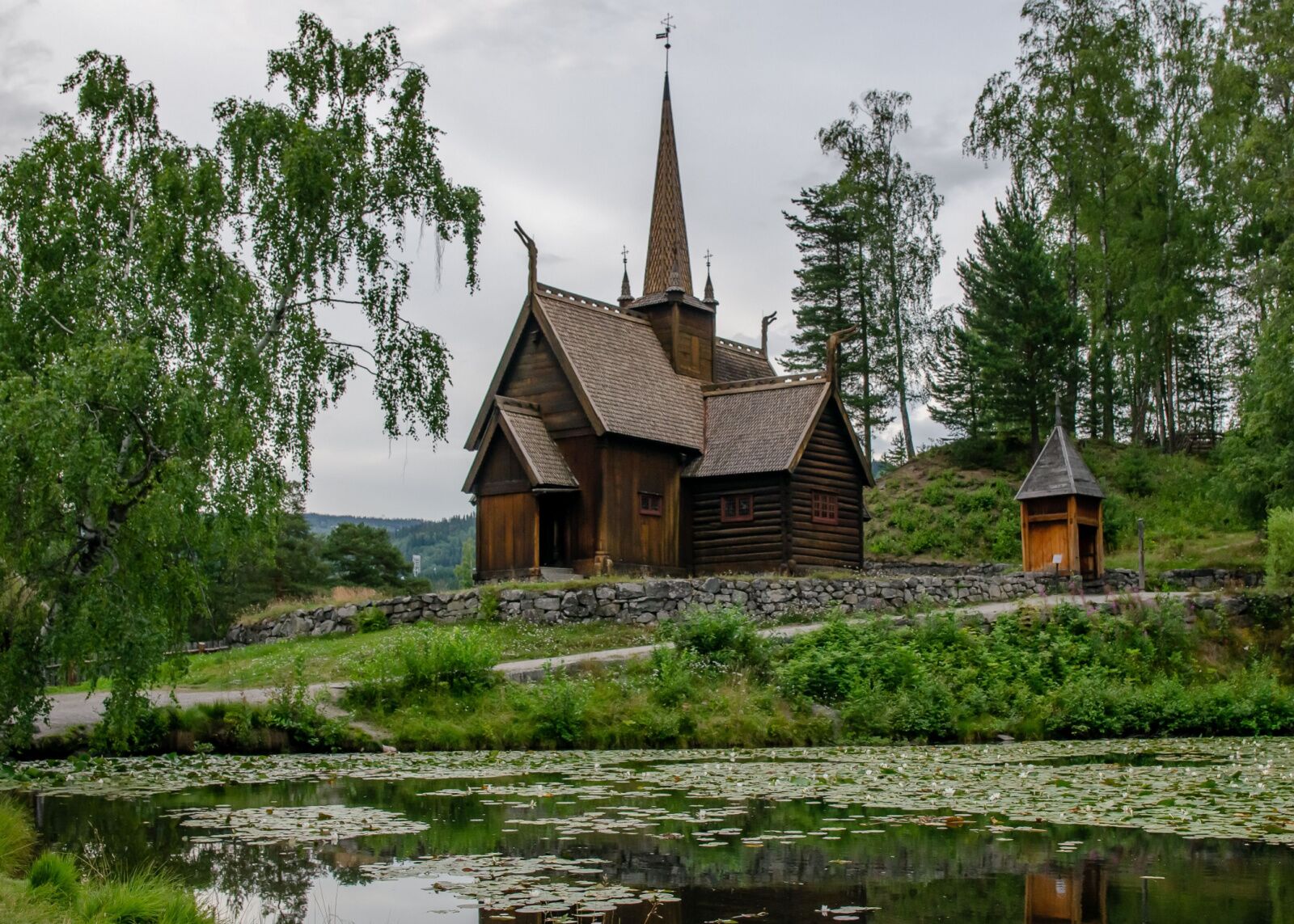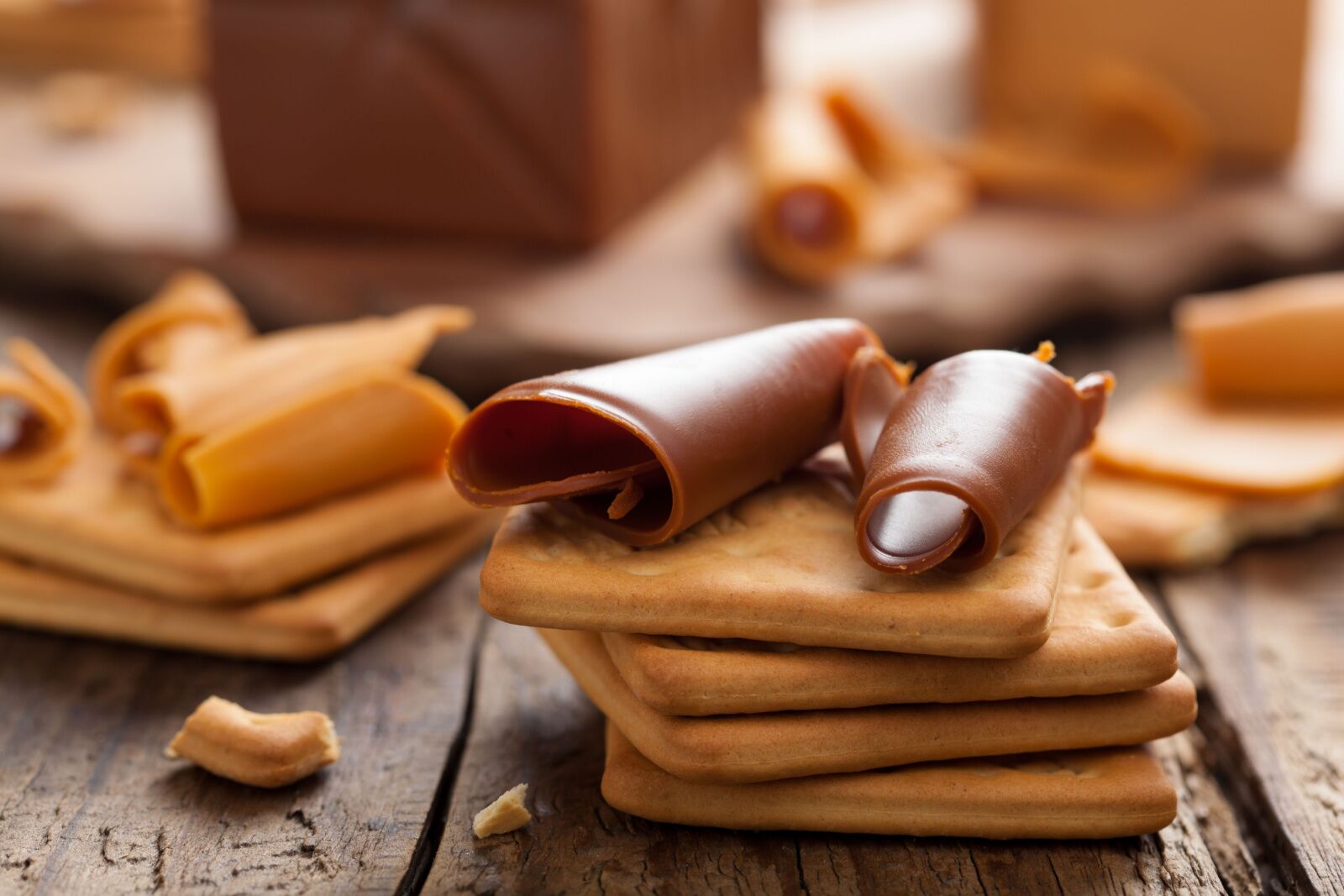Sitting in the center of Norway’s picturesque Gudbrandsdalen Valley is the lovely town of Lillehammer, one of the country’s most popular ski destinations. Apart from its more obscure claim to fame as the place where the cheese slicer was invented, the town is most recently known for hosting the 1994 Winter Olympics. Yet it’s still fairly under-the-radar. While enthusiasts flock each year to slopes in the Dolomites or farther south in the Alps, Lillehammer remains mostly unconsidered by most non-Norwegians as a ski destination — though it’s one worth discovering.


Giant Trolls, Bobsleds, and Northern Lights: Winter in Lillehammer, Norway
The town is easily accessible from Norway’s capital of Oslo via a two-hour train ride. On any given weekend during the country’s long winter months, the train will be packed with skiers of both the downhill and cross-country variety. The former will head to Hafjell or Kvitfjell ski resorts, both of which offer plenty of well-groomed slopes to accommodate beginners through advanced-level skiers. But cross-country skiers are mostly heading to Lillehammer’s 1,400-plus miles of maintained cross-country trails, passing through forests and alongside sun-dappled streams. Lillehammer’s ample snowfall each year ensures optimal skiing conditions, and its little-known reputation means fewer crowds than, say, St. Moritz or Gstaad.

Photo: Madrugada Verde/Shutterstock
No matter where visitors play in the snow, they’ll experience something there that can’t be found anywhere else: the Norwegian sky. During the shortest winter days in Lillehammer, late sunrises (around 9:30 AM) and early sunsets (around 3:30 PM) turn the sky into a painter’s palette of orange and pink-tinged clouds, making the town’s already unforgettable natural landscape even more breathtaking.
Those darkened skies also make for a cozier après-ski feeling. Along the town’s quaint streets, the windows of traditional wooden houses emit a warm glow after sunset, giving the effect of strung Christmas lights running the length of the valley. And, of course, if you can resist the urge to turn in early, there’s a good chance of being rewarded with a life-affirming show of the sought after aurora borealis, or northern lights.
Lillehammer’s legacy of winter sports

Photo: Adam Knauz/Shutterstock
Lillehammer takes pride in its sporting history, which is reflected in its well-preserved Olympic facilities and museums. When not skiing, visitors can get into the Olympic spirit by exploring the Olympic Museum or taking the chairlift at the Lysgårdsbakkene Ski Jumping Arena to get a birds-eye view of the valley, including the river-like northern tendrils of Lake Mjøsa (Norway’s largest lake) and the surrounding forested hills. There’s even the option to live-out those “Cool Runnings” fantasies by taking a ride on Lillehammer’s bobsleigh and luge track. It’s the only one in all of Scandinavia.
Beyond Olympic-level sports, there’s the option to try dog sledding, a quintessential Scandinavian experience. You can drive (or be driven by) a team of huskies racing through forested trails as an invariably low-slung sun streams through snow-covered trees. You can also visit many of the dog sledding companies just to visit with the dogs, if you’re not interested in the actual sledding experience.
Just remember to wear warm socks and solidly waterproof boots: braking on a dog sled requires pressing your heel firmly into the snow, and more porous shoes will quickly absorb the icy moisture. After most dog sled tours, there’s usually a bonfire with fellow sledders, including hot chocolate and traditional treats like bread dough roasted on a stick (known as skorfjorden, or, appropriately, “stick bread”).
Lillehammer is heavy on cultural charms

Photo: LapaiIrKrapai/Shutterstock
But the city has way more than just exceptional snow-related offerings, and even more of Lillehammer’s charm lies in its unique cultural heritage. Cheese slicers aside, the region has a fascinating history. It’s the birthplace of Norway’s famed “Birkebeiner legend,” named after a former political party.
According to the tale, in the 13th century, two brave Birkebeiner warriors safely escorted the two-year-old heir to the Norwegian throne from Lillehammer to Trondheim; it was a long and perilous journey done almost entirely on skis. To this day, that journey is commemorated through two cross-country ski races, the Birkebeinerrennet and Birkebeinerrittet, both of which end in Lillehammer to joyous celebration. Schedule your trip for March to get in on the celebrations.
If you’re curious what life might have looked like in the region all those years ago, visit the Maihaugen Museum. It’s one of Northern Europe’s largest open-air museums and invites visitors to explore nearly 200 historical buildings depicting village life from the 1200s to the early 20th century.
Hunderfossen park and an ice hotel
Lillehammer’s appeal extends to groups of mixed skiers or families thanks to attractions like the Hunderfossen theme park and Snow Hotel. In warmer months, Hunderfossen is one of Norway’s most popular theme parks, but there’s plenty to enjoy in the winter, too. It may be most famous, however, as the home of the Hunderfossen Troll. At 45 feet tall, it’s the tallest troll in the world (and also one of the most photographed). It stands guard over the entrance to Hunderfossen’s Trollsalan restaurant.
As if that isn’t enough to stir the imagination, each winter, the park builds the “Hunderfossen Snow Hotel,” accommodating up to 24 guests. Inside, there’s a reception area, bar, and sleeping areas, as well as several ice sculptures illuminated in purple, orange and green lights to mimic the aurora borealis. Room temperatures will vary from 19 to 26 degrees Fahrenheit, but guests are kept cozy on beds adored with sheepskins and arctic-rated sleeping bags. You’ll want to book the Snow Hotel in advance online. It’s a bit pricey, starting around NOK 9,950, or about $885, for two people in a shared room.
Expect hearty and traditional dining, with unexpected fusions

Brunost, a popular Norwegian snack. Photo: Olga Miltsova/Shutterstock
Lillehammer’s culinary scene fuses traditional Norwegian flavors and contemporary gastronomic trends (and, of course, a good deal of sliced cheese). Indeed, a favorite après-ski snack for many Norwegians is a slice of brunost, or brown cheese, on toast or waffle, washed down with a hot cup of coffee.
For something more refined, standout restaurants in town include the Lillehammer Bryggeri; it was one of the first microbreweries in Norway and has a history going back more than a century.
Hvelvet, a fine-dining restaurant in the old Norges Bank, also boasts an impressive history. For 10 days in 1940, the bank’s vault stored all the gold in Norway to keep it from the encroaching Nazi Party. When it came time to move the gold, a total of 30 volunteers carried it to the local train station, taking time to wander the streets and grab a cup of coffee so as not to arouse suspicion. And the city also offers plenty of traditional favorites, ranging from traditional Norwegian pastries to bowls of hearty reindeer stew.
Incredible skiing, small crowds, and affordable lodging compared to more popular European ski destinations should be enough to convince any winter sport enthusiast to add a few days in Lillehammer the next time they’re anywhere near Norway. Unlike its more popular counterparts, Lillehammer allows visitors to relish the tranquility of the slopes and scenery without the overwhelming tourist rush. The town’s unassuming charm, coupled with a diverse array of activities, makes it an ideal destination for those seeking a far less mainstream winter adventure.